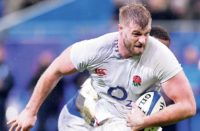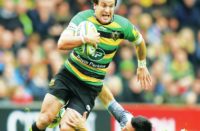 I had to do something to unsettle Wallaby captain Nick Farr-Jones in the second Lions Test now known as the ‘Battle of Ballymore’ in 1989 – and luckily I got away with stamping on him.
I had to do something to unsettle Wallaby captain Nick Farr-Jones in the second Lions Test now known as the ‘Battle of Ballymore’ in 1989 – and luckily I got away with stamping on him.
The stamp that sparked the infamous brawl was not premeditated but he had been so instrumental in the 30-12 thrashing in the first Test that it turned things around.
Ian McGeechan made me realise that intimidating Farr-Jones could work in our favour. It worked because by getting under the skin of their talismanic skipper it got into the Australian psyche.
From that moment we were on top and went on to win the game and the Test series. The match officials could not have cared less about it all and the scuffle occurred before citing officers were employed, otherwise I would have been in a lot of trouble.
I will never forget the day I made my Swansea debut as an 18-year-old from Trebanos on November 27, 1983 against South Wales Police.
It was the first time I had played against men, let alone internationals. I felt a sense of excitement and trepidation playing in front of an extremely partisan Swansea crowd. After the game everyone began talking about the capability of my pass. I was able to deliver quick ball for the backline which was different to what most other scrum-halves in Wales were doing at the time.
It was a privilege to play for Swansea and when the game went professional I turned down lucrative offers to play in England’s top division to stay committed to my home side.
It was a childhood dream when I made my Welsh debut against England in 1986. Jonathan Davies and I formed a successful partnership which I thrived on. He was one of the best players I have ever seen. He was very much the quick and elusive outside-halve similar to Phil Bennett who could beat defenders with ease.
In 1987 we reached the semi-finals of the inaugural World Cup and I believed we were in the process of developing into one of the world’s top teams.
Winning the 1988 Triple Crown was a bittersweet moment for Welsh rugby. It was fantastic to achieve what we did in the Five Nations but it was disappointing not to win the Grand Slam that year when we lost to France in Cardiff.
That year also saw a dramatic upheaval of players and coaches, with top-class players like Jonathan moving to Rugby League. It took a long time for Welsh rugby to recover.
When I was invited to play for a World XV in Naas Botha’s testimonial match in South Africa in 1993, Springbok legend Morne de Plessis asked if I would be interested in playing for Western Province.
I saw this is a great challenge where I could gain experience as a person and as a player.
It was an eye-opener arriving on the day of the first democratic elections where Nelson Mandela was elected as South African president in 1994. I combined playing for Western Province and Swansea for two years, which is unheard of in the modern rugby era.
Since retiring, I have been a rugby pundit and assistant coach at Llanelli Scarlets. I have even done a bit of writing with a sport psychology ebook called How Winners Think.























